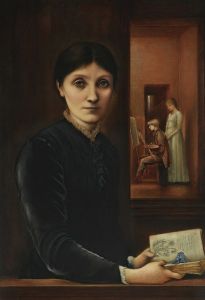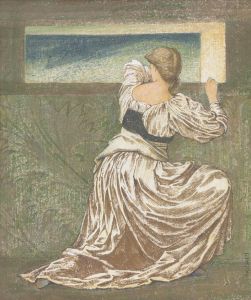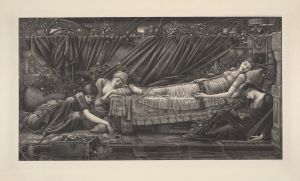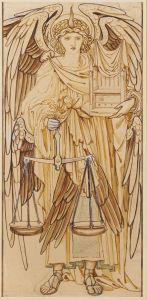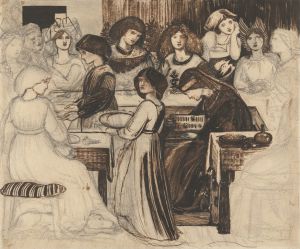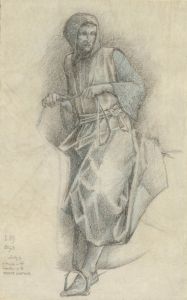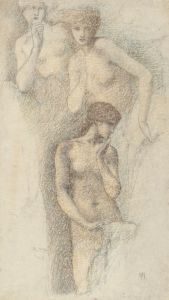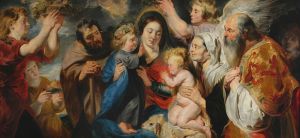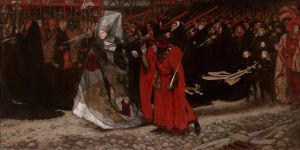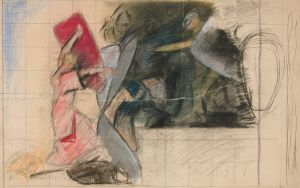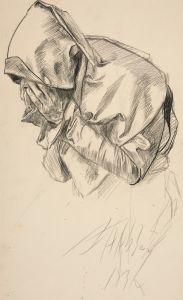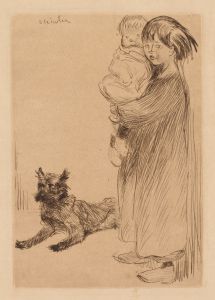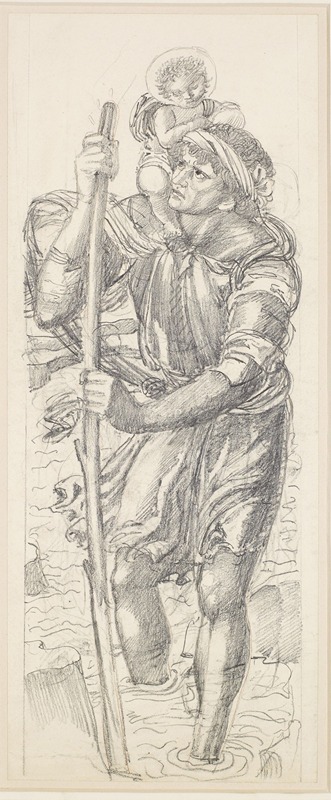
St Christopher and the Infant Christ
A hand-painted replica of Sir Edward Coley Burne-Jones’s masterpiece St Christopher and the Infant Christ, meticulously crafted by professional artists to capture the true essence of the original. Each piece is created with museum-quality canvas and rare mineral pigments, carefully painted by experienced artists with delicate brushstrokes and rich, layered colors to perfectly recreate the texture of the original artwork. Unlike machine-printed reproductions, this hand-painted version brings the painting to life, infused with the artist’s emotions and skill in every stroke. Whether for personal collection or home decoration, it instantly elevates the artistic atmosphere of any space.
"St Christopher and the Infant Christ" is a painting by the British artist Sir Edward Coley Burne-Jones, a prominent figure associated with the Pre-Raphaelite Brotherhood and the later Aesthetic Movement. Burne-Jones is renowned for his intricate and romantic style, often drawing on medieval themes and classical mythology. This particular work, "St Christopher and the Infant Christ," exemplifies his fascination with religious and legendary subjects.
The painting depicts the legendary story of Saint Christopher, a popular figure in Christian folklore. According to the legend, Christopher was a giant who devoted his life to helping travelers cross a dangerous river. One day, he carried a small child across the river, only to find that the child was incredibly heavy. The child revealed himself to be Christ, and the weight symbolized the burden of the world that Christ carried. This moment of revelation is a central theme in the painting.
Burne-Jones's interpretation of this story is characterized by his typical attention to detail and use of rich, vibrant colors. The composition likely features the towering figure of St. Christopher, with the Christ child perched on his shoulder or in his arms, emphasizing the contrast between the giant's strength and the child's divine nature. The background may include elements of nature, such as the river and surrounding landscape, rendered in Burne-Jones's signature style, which often includes intricate patterns and a dreamlike quality.
The painting reflects Burne-Jones's interest in the spiritual and the mystical, common themes in his body of work. His style is marked by a departure from the realism that dominated much of 19th-century art, instead embracing a more symbolic and idealized approach. This aligns with the broader goals of the Pre-Raphaelite Brotherhood, which sought to return to the detail, intense colors, and complex compositions of pre-Renaissance art.
"St Christopher and the Infant Christ" is part of Burne-Jones's broader exploration of religious and mythological themes, which he revisited throughout his career. His works often convey a sense of otherworldliness and are imbued with a narrative quality that invites viewers to engage with the stories depicted.
Burne-Jones's impact on the art world extends beyond his paintings. He was also influential in the decorative arts, contributing designs for stained glass, tapestries, and illustrations. His work had a significant influence on the development of the Arts and Crafts Movement, which emphasized craftsmanship and the integration of art into everyday life.
The painting is an example of Burne-Jones's mature style, showcasing his ability to blend narrative content with aesthetic beauty. While specific details about the painting's current location or its provenance may not be widely documented, it remains an important part of Burne-Jones's artistic legacy.
In summary, "St Christopher and the Infant Christ" by Sir Edward Coley Burne-Jones is a significant work that captures the artist's fascination with religious themes and his distinctive style. Through this painting, Burne-Jones continues to be celebrated for his contribution to the Pre-Raphaelite and Aesthetic movements, leaving a lasting impact on the art world.





